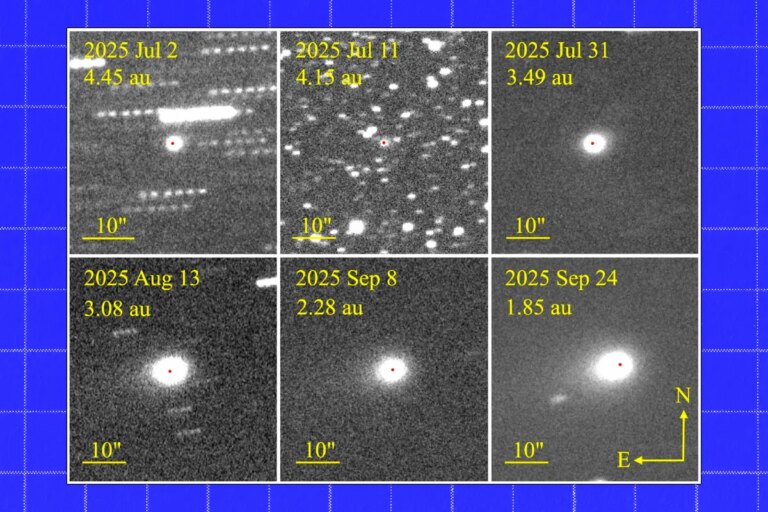In case you missed it, there’s a fascinating object from another part of the universe visiting our neck of the woods.
Dubbed 3I-ATLAS — “three” as in the third known interstellar object from outside of our solar system — the bizarre entity has had the astronomical community in a quiet fervor since it was first spotted in early July.
The object is widely believed to be an interstellar comet, although a handful of experts, including Harvard’s ever-controversial astronomy researcher Avi Loeb, have suggested that it might be a visitor from an alien civilization. Many of Loeb’s peers have dismissed that possibility, but that hasn’t quieted the firebrand researcher.
The object is currently hidden behind the Sun, where it’s slated to remain unobservable from Earth for the better part of a month — a blind spot that Loeb had already speculated the object might use to do something unexpected. Now, the latest images from Nordic Optical Telescope, located in the Canary Islands, have provided him with new fodder.
Those images suggest that a “tail” of debris the object sprouted as it neared the Sun has now changed directions, and is instead facing toward the Sun. Astronomers call this an “anti-tail,” a phenomenon which has been observed in a number of other comets going back decades.
Anti-tails have a simple explanation: as the object approaches the sun, our relative position makes the long trail of particulate appear to flip, when in reality it hasn’t changed. Basically, we’re getting a 3D optical illusion, exacerbated by the Sun’s gravity and our relative position in space.
Loeb, though, has another explanation. In his latest blog on the interstellar object, Loeb posits that the anti-tail could show an alien craft applying “braking thrust” — slamming on the brakes, essentially, as it seeks to prolong its sojourn through our star system.
“If the object is an alien spacecraft slowing down, and the anti-tail is braking thrust, then this change from anti-tail to tail would be entirely expected near perihelion,” Loeb wrote, referencing an idea shared by his colleague Adam Hibberd at the Institute for Interstellar Studies.
“In that case,” Loeb continues, the “transition would constitute a technosignature in the form of an unexpected phenomenon indicative of controlled maneuvering, possibly with the intention of achieving a bound heliocentric orbit between Mars’s and Jupiter’s orbits.”
Either way, it’ll be a while before we know for sure. The object isn’t expected to reappear until December 19, at which point it’ll be clear whether its trajectory has been altered by a braking maneuver — or if it’s still simply hurtling through space like the inert snowball that most scientists believe it to be.
More on space: Startup Reveals “Space Armor” to Protect Astronauts From Elon Musk’s Orbital Trash
Images are for reference only.Images and contents gathered automatic from google or 3rd party sources.All rights on the images and contents are with their legal original owners.

